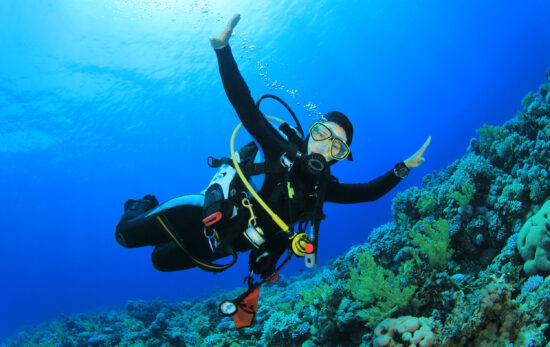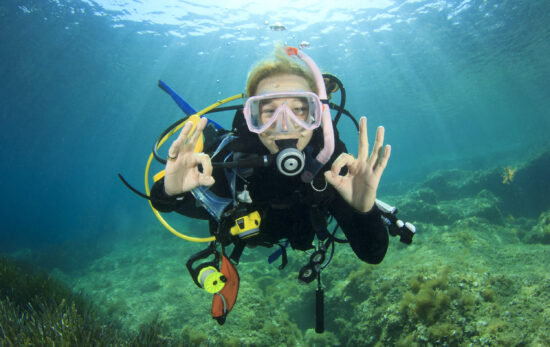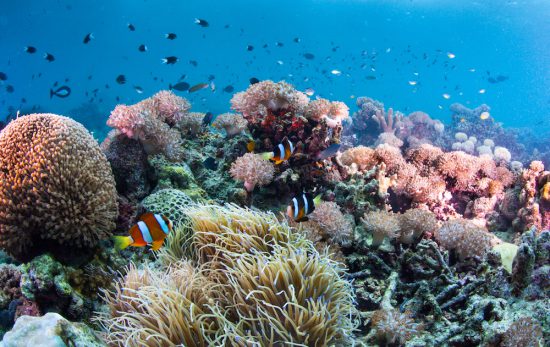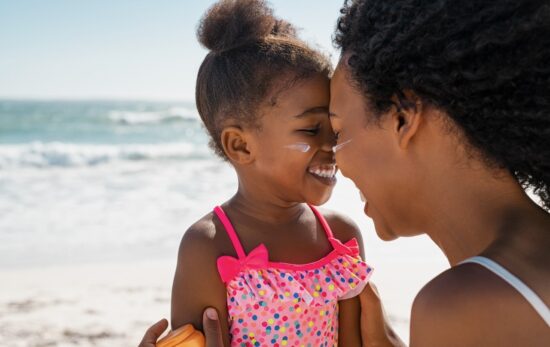Some divers like deep wrecks, kelp forests, or caves, but I prefer shallow, tropical dives. I love watching sunbeams dance across the reef and feeling the warm sun on my skin.
Maybe I love the sun so much because I grew up in the Pacific Northwest (an area known for its cold, wet weather). From mid-October through mid-April, there are only a handful of sunny days.
When I was about 10-years-old, my dad was diagnosed with skin cancer (Melanoma. Everyone was shocked. While some dads fish, play golf or ride mountain bikes, mine watched TV, read books and played poker. In other words, he was an indoor dad (with a fair complexion).
The doctors caught his cancer in time and were able to remove the melanoma. He’s still alive today, but the experience left us with a lot of uncertainty. If my dad could get skin cancer just by mowing the lawn occasionally, we all need to be careful. The best way to prevent skin cancer, wrinkles and other issues is to minimize sun exposure. But if, like me, you crave star damage here’s how to protect your skin:
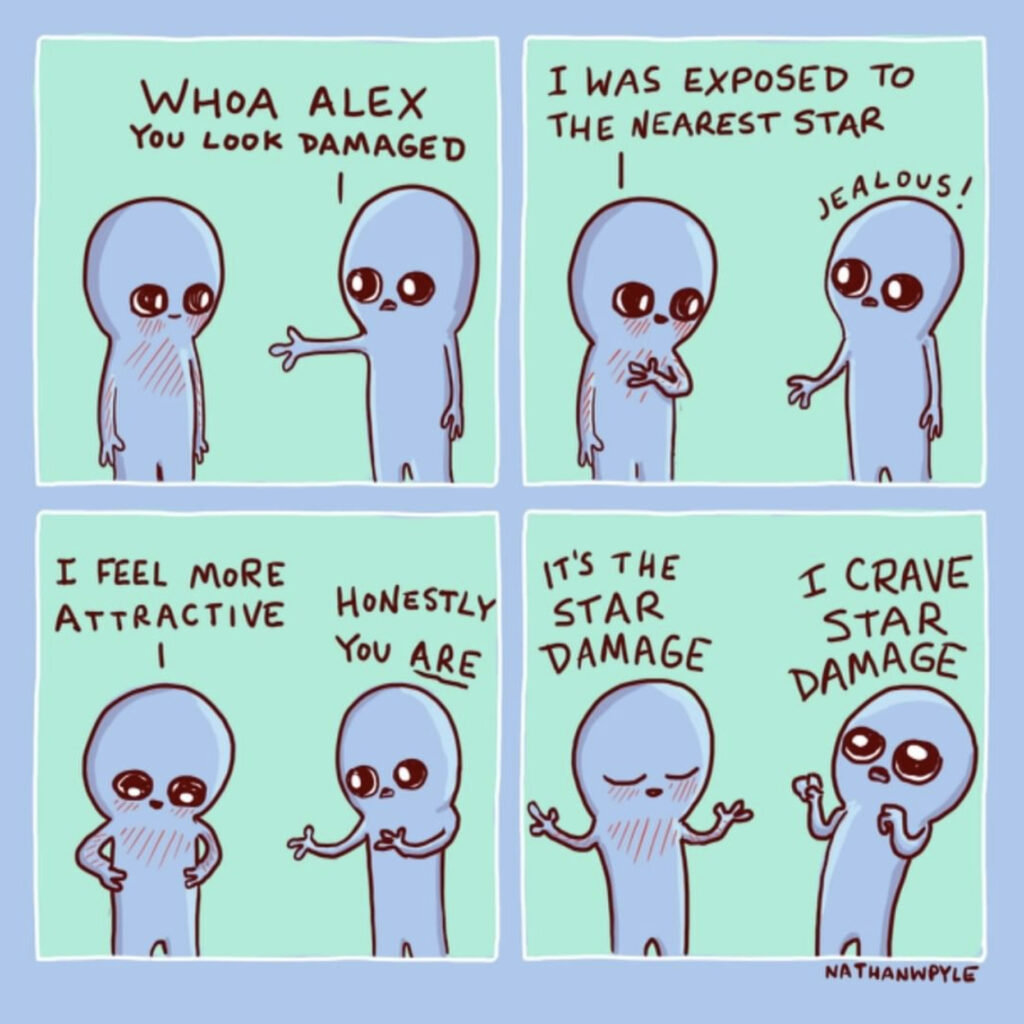
#1: Avoid Peak UV Radiation Hours
The sun’s rays hit peak intensity between 10 am – 4 pm, so it’s important to avoid direct exposure during these hours (even on cloudy days). The outside temperature is not an accurate way to measure UV intensity, use your watch instead.
#2: Cover Up
Hats, rashguards, umbrellas and other physical barriers are better than sunscreen — for a lot of reasons.
- Your rashguard won’t wash off underwater.
- Many sunscreens, even ones labeled “reef safe” contain chemicals that can kill coral.
- Most people don’t use enough sunscreen (see #5 below).

#3: Wear Sunglasses with UV protection
Sunglasses with UV protection minimize damage that can lead to vision problems (due to macular degeneration), premature cataracts and skin cancer in the area around your eyes. Check out these sunglasses made from ocean plastic that offer 100% UV protection.
#4: Don’t Forget Your Neck, Lips and Ears
Some of the most common places skin cancer will form include the neck, hands, ears, lips and face. Most of us are good about putting sunscreen on our face and hands but may forget about the back of the neck, lips and tips of the ears. The best way to prevent sun damage to these areas is to use a lip balm with SPF and wear a wide-brimmed hat.
- I like All Good’s natural lip balm with SPF because it uses (reef safe) non-nano zinc oxide. I accidentally bought a lip balm made with chemical sunscreen and it irritated my lips so much I almost went to the doctor.
- If a wide-brimmed hat isn’t your style, use a reef-safe sunscreen to protect the back of your neck and tips of your ears.
#5: Do Sunscreen Shots With Your Buddy
Most people don’t use enough sunscreen. Doctors recommend using a shot glass-sized amount to thoroughly cover your body. That means a 100 ml/3.5 oz squeeze bottle of sunscreen contains only three or four applications (another reason to invest in a rashguard – you can use it over and over).
If you use sunscreen, ask your buddy for assistance applying it to your back, shoulders and other hard-to-reach places. Make sure you apply sunscreen at least 30 minutes before sun exposure to ensure it has enough time to absorb into your skin.
#6: Don’t Use Expired Sunscreen
Most sunscreens have an expiration date stamped on them somewhere. If you can’t find a date stamp, but suspect the bottle is more than three years old, don’t use it.
- Sunscreen is good for up to three years, but exposure to sunlight or high temperatures can cause it to expire faster.
- Don’t keep sunscreen in your car or leave it in direct sunlight. When diving, wrap it up in a towel and put it in the coolest place you can find.
- Dispose of any sunscreen that smells funny, has changed color, separated or if the contents are clumpy.
- When you buy a new sunscreen, write the purchase date (month and year) on the bottle using a permanent marker.
#7: Use Natural, Reef-Safe Sunscreen
As mentioned above, a wide-brimmed hat plus a long-sleeved rashguard with UV protection is the most reef-friendly way to protect your skin. If, for whatever reason, the hat + rashy combo doesn’t work for you, please choose a (truly) reef-safe sunscreen.
Many popular sunscreens contain chemicals that destroy coral – even products labeled “reef safe.” A recent study found just one drop of oxybenzone in 15 million liters (3.9 million gallons) of water is all it takes to kill coral, and certain diving destinations ban chemical sunscreens.
Before you buy your next bottle of sunscreen:
- Check the list of ingredients on the label.
- Ask a local PADI® Dive Shop what they recommend.
- Use a sunscreen from our list.

